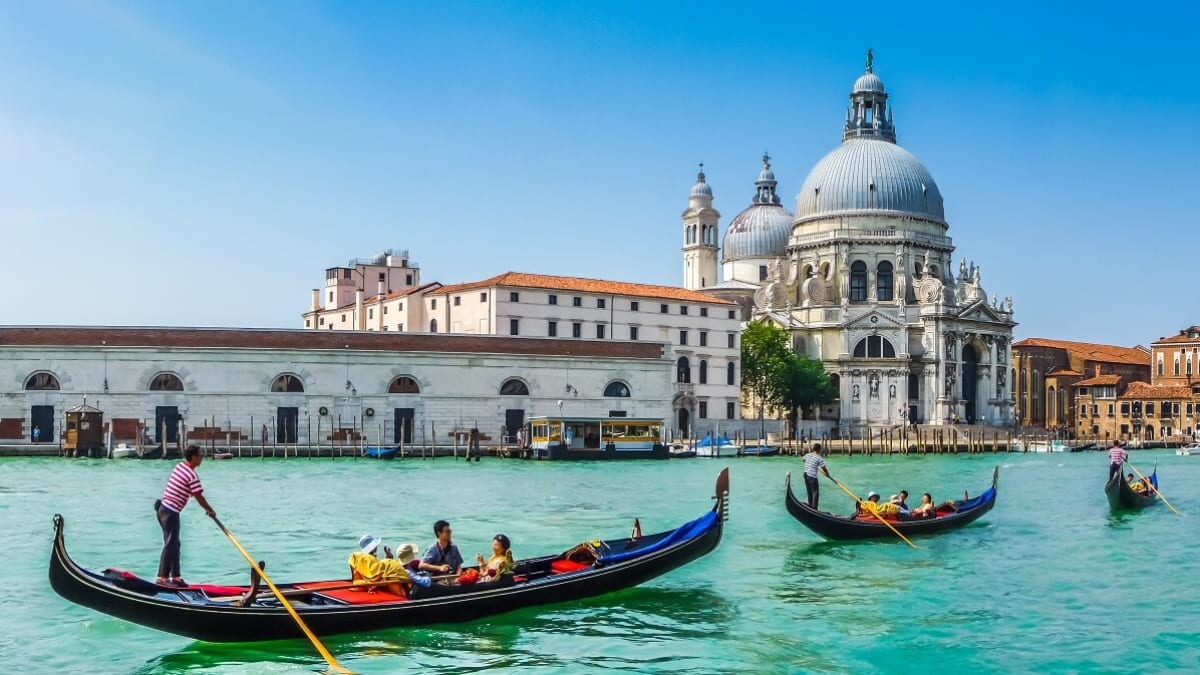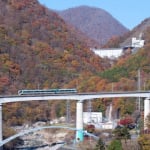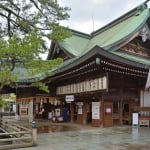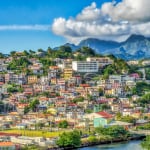Name: Milan Cathedral / Duomo di Milano
Address: Piazza del Duomo, 20122 Milano, Italy
Italy, a country steeped in history that captures the hearts of countless tourists, consistently ranks high on lists of countries people want to visit. It’s filled with iconic attractions like the Leaning Tower of Pisa, the Mouth of Truth, and the Colosseum—landmarks that almost everyone has heard of at least once! The country is also home to numerous museums showcasing masterpieces by greats like Michelangelo and Leonardo da Vinci, making it a bustling destination for art lovers. As the world’s smallest country, Vatican City is located within Rome, making it an easy addition to your itinerary.
table of contents
[x] close
20 recommended sightseeing spots in Italy
- 1. Duomo (Milan)
- 2. Colosseum (Rome)
- 3. Pantheon (Rome)
- 4. Trevi Fountain (Rome)
- 5. Vatican Museums (Vatican City)
- 6. Sistine Chapel (Vatican City)
- 7. Capitoline Hill (Rome)
- 8. Arch of Constantine (Rome)
- 9. Piazza Venezia (Rome)
- 10. Mouth of Truth (Rome)
- 11. Sforzesco Castle (Milan)
- 12. Santa Maria delle Grazie (Milan)
- 13. Piazzale Michelangelo (Florence)
- 14. Uffizi Gallery (Florence)
- 15. St. Mark's Basilica (Venice)
- 16. Bridge of Sighs (Venice)
- 17. La Fenice Theatre (Venice)
- 18. Tower of Pisa (Pisa)
- 19. Blue Grotto (Capri)
- 20. Leonardo da Vinci National Museum of Science and Technology (Milan)
- ◎Summary of recommended tourist spots in Italy
1. Duomo (Milan)
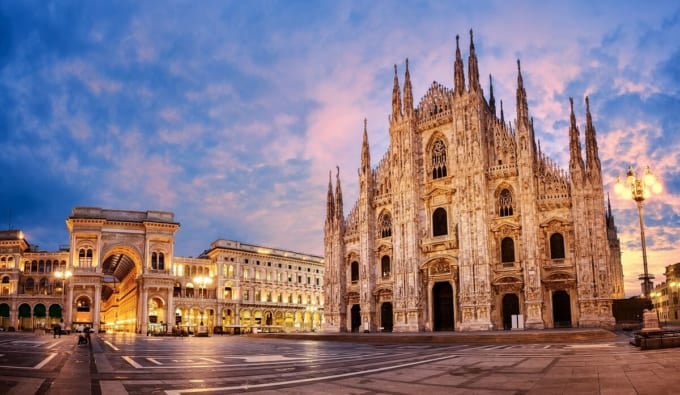
Located in the heart of Milan, this magnificent cathedral, the Duomo, serves as a symbol of the city. Designed by Gian Galeazzo Visconti in 1386, it took nearly 500 years to complete. Measuring 158 meters in length, 93 meters in width, and 108 meters in height, with an interior area of 11,700 square meters, it is one of the largest Gothic structures in the world and a popular attraction for international tourists.
Inside, you’ll find exquisite and artistic details throughout, creating a breathtakingly beautiful sight. The floors, made of luxurious marble, add a grand ambiance to the cathedral. Despite its historical significance, the Duomo is quite high-tech, featuring not only stairs but also an elevator that takes visitors to the rooftop. From there, you can enjoy a panoramic view of Milan, making it a must-visit when touring Italy.
2. Colosseum (Rome)
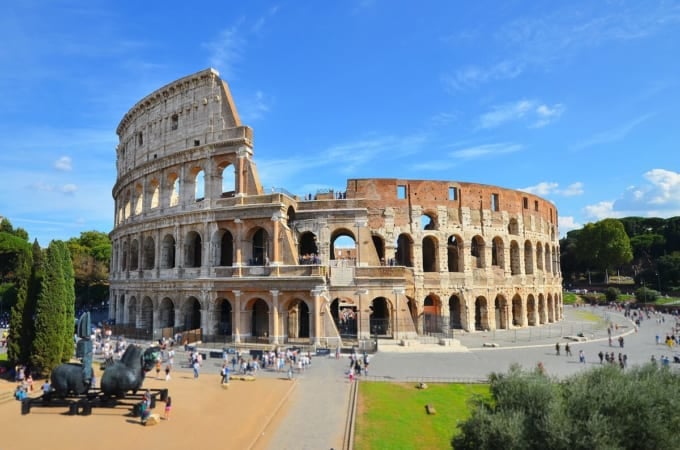
When visiting Rome, Italy, the Colosseum is an absolute must-see. Most of us have likely seen a photo of the Colosseum in our history textbooks as students. Recognized as a UNESCO World Heritage Site, this renowned landmark is always bustling with tourists from around the world.
The Colosseum is an ancient amphitheater built nearly 2,000 years ago, where slaves and prisoners once fought as gladiators. At times, they even faced wild animals like lions and buffaloes, fighting for freedom or to win significant prize money. It was said to be the greatest entertainment for Roman citizens of the time.
With a circumference of 527 meters, a height of 48.5 meters, and seating for about 50,000 people, it’s impressively large. Built from concrete and bricks, it’s astounding to think this structure was made 2,000 years ago. The engineering prowess of the ancient Romans will leave you in awe. As one of Italy’s most famous tourist attractions, it’s definitely worth a visit.
Name: Colosseum / Colosseo
Address: Piazza del Colosseo, 1, 00184 Rome, Italy
3. Pantheon (Rome)
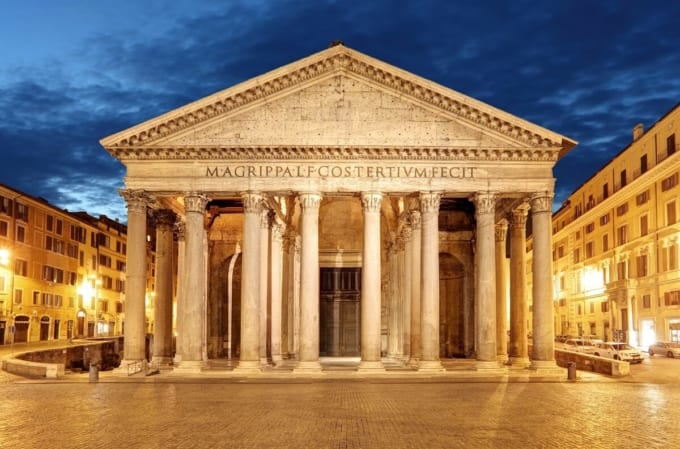
The Pantheon, one of Rome’s popular tourist attractions, was constructed nearly 2,000 years ago. Despite its simple stone design, the Pantheon exudes a grand and majestic atmosphere, so much so that Italy's famous artist Michelangelo once praised it as the design of angels.
As a precious structure that still retains its original appearance from ancient Roman times, it attracts countless visitors daily. Italians hold it dear as well, with a proverb saying, “He who goes to Rome and does not see the Pantheon appears a fool and leaves a fool” (“Chi va a Roma e nun vede la Ritonna asino va e asino ritorna”).
While it’s wonderful to visit the Pantheon during the day when sunlight streams through, it transforms at night when it’s illuminated, creating a completely different atmosphere. It’s worth seeing both day and night.
Name: Pantheon
Address: Piazza della Rotonda, 00186 Rome, Italy
4. Trevi Fountain (Rome)
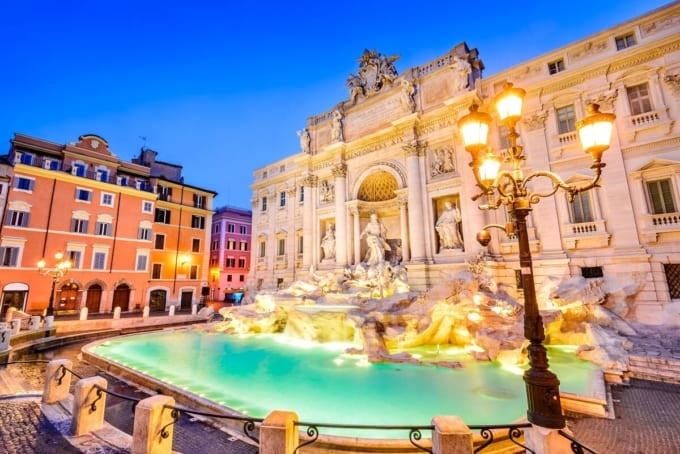
The Trevi Fountain is said to be the largest Baroque fountain in Rome, Italy. Though it’s called a fountain, it’s actually an artificial water feature and a popular tourist spot featured in the American romantic comedy When in Rome.
There’s a famous love-related tradition associated with the Trevi Fountain. It’s said that if you toss a coin into the fountain over your shoulder, your wish will come true, with each coin count representing a different wish. Tossing one coin means you’ll return to Rome. Two coins mean you’ll be together forever with your loved one. Strangely, three coins allow you to separate from a lover, husband, or wife.
This three-coin charm is thought to be rooted in the historical Christian prohibition against divorce. When making a wish, be careful not to miscount the number of coins you toss! It’s a must-try experience when visiting Italy.
Name: Trevi Fountain / Fontana di Trevi
Address: Piazza di Tre
5. Vatican Museums (Vatican City)
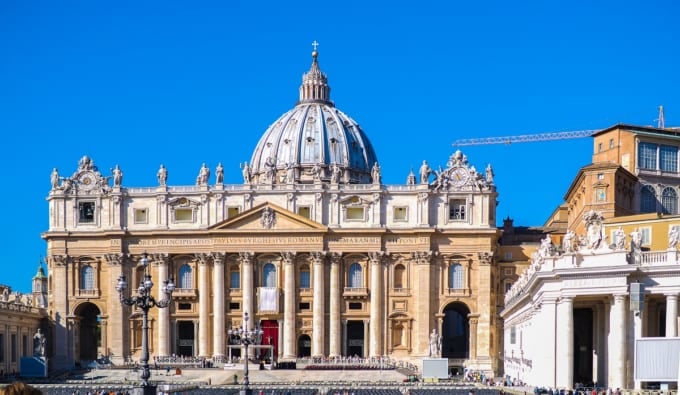
A must-visit when in Rome, Italy, is the Vatican Museums within Vatican City, the world’s smallest country, whose entire land is a UNESCO World Heritage Site. Spanning over 500 years, various popes amassed the collections displayed here, making it one of the world’s largest museums, with around 25 galleries and museums. This extensive collection draws tourists from all over the world, making it a bustling destination.
Due to the 500 years of collecting, it’s said that viewing every piece would take about a week. If you’re just browsing the famous works, two hours might be sufficient, but it’s recommended to take your time and explore at a leisurely pace.
Since Vatican City is a sacred place, there are dress checks at museum entrances. Visitors should avoid wearing revealing clothing such as camisoles, shorts, or mini skirts when touring the museum.
Name: Vatican Museums / Musei Vaticani
Address: Viale Vaticano, 00165 Rome, Italy
6. Sistine Chapel (Vatican City)
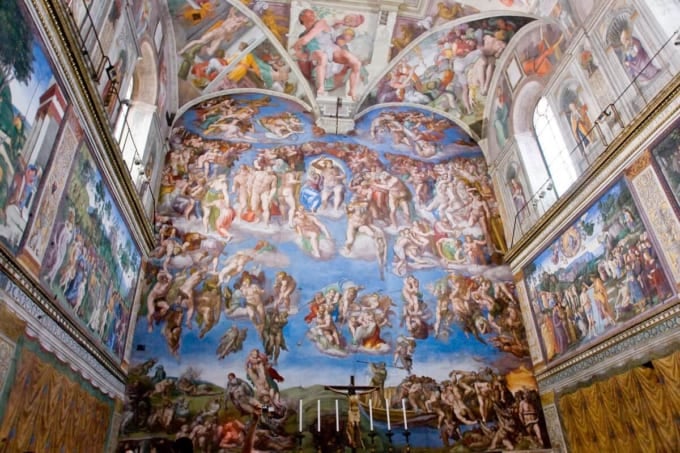
The Sistine Chapel, located within the Vatican Palace, is a must-see destination for many tourists visiting Italy. Built in 1475 by order of Pope Sixtus IV, this historic building is still used today for the selection of a new pope.
The chapel is adorned with famous ceiling and wall paintings by the legendary Renaissance artist Michelangelo. Among these is the powerful Last Judgment, a masterpiece that took Michelangelo six years to complete when he was in his 60s. The bold brushstrokes and awe-inspiring artwork are sure to captivate all who see them.
The chapel is renowned for housing some of Michelangelo’s most famous works, making it a valuable site that attracts many visitors, including both art enthusiasts and casual tourists. Photography is prohibited inside, and as the chapel is a sacred place, speaking loudly is also forbidden. Please be mindful of the rules and enjoy your visit to this solemn site.
Name: Sistine Chapel / Aedicula Sixtina
Address: 00120 Vatican City
7. Capitoline Hill (Rome)
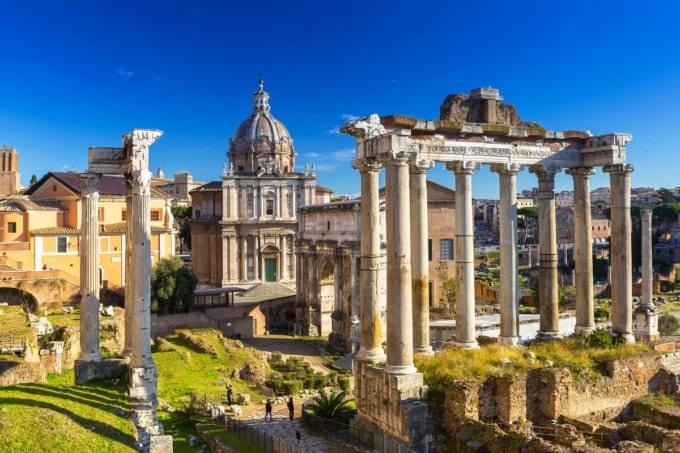
The Capitoline Hill is the largest of the seven hills that are said to have formed the foundation of ancient Rome. It once housed temples dedicated to deities from Roman mythology, including Jupiter, and is now an important site for the government, as it hosts Rome’s City Hall and other political and administrative buildings. The summit of Capitoline Hill is home to the Piazza del Campidoglio, designed by Michelangelo, making it a must-visit spot for tourists in Italy.
This was the first Baroque-style square in architectural history to unify differently shaped buildings along a single axis, creating a stunning cityscape. The square, much loved by Italians, hosts various events and is surrounded by artistically beautiful buildings. Be sure to notice the unique mosaic floor patterns during your visit. When sightseeing in Italy, take time to relax on Capitoline Hill and enjoy the wonderful view.
Name: Capitoline Hill / Campidoglio
Address: Piazza del Campidoglio, 00186 Rome, Italy
8. Arch of Constantine (Rome)
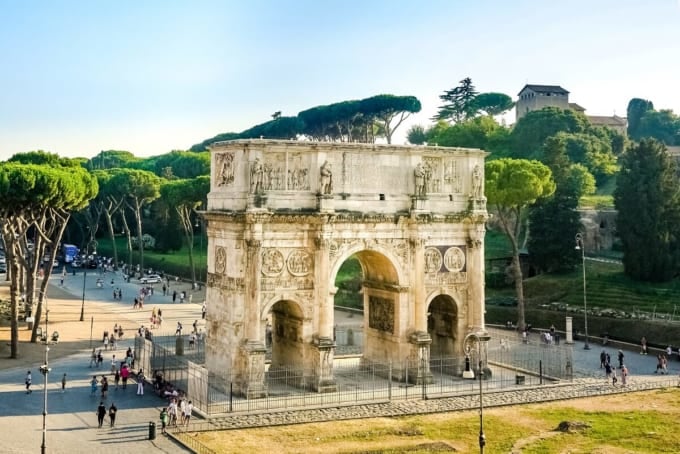
The Arch of Constantine, an iconic structure of ancient Roman architecture, is located in Rome and is a must-see destination when touring Italy. Near the popular Colosseum, this monument is conveniently situated for sightseeing.
While the Arc de Triomphe in Paris is widely known, the Arch of Constantine is actually older. There’s even a story that Napoleon admired this particular triumphal arch.
The Arch of Constantine was built to commemorate the victory of Emperor Constantine I, the 47th emperor of the Roman Empire, in the Battle of the Milvian Bridge in 312, where he defeated Emperor Maxentius during the Tetrarchy period. The arch stands as a monument to reflect on the sacrifices of soldiers and the joy of victory.
Name: Arch of Constantine / Arco di Constantino
Address: Via di San Gregorio, 00186 Rome, Italy
9. Piazza Venezia (Rome)
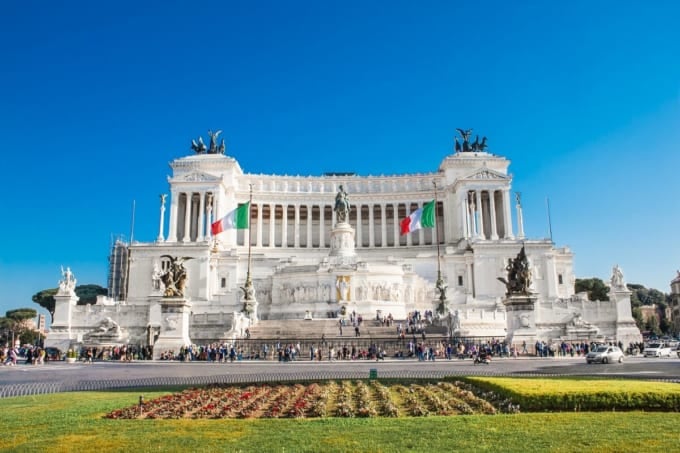
Piazza Venezia is a beautifully landscaped square located in the heart of Rome, Italy. Named after the Palazzo Venezia, which faces the square, it’s known for its neatly maintained lawns. Situated at the foot of Capitoline Hill, one of Rome's seven hills, it offers easy access to numerous nearby attractions.
Benito Mussolini, the famous leader of the National Fascist Party, had his office in the Palazzo Venezia and gave speeches from a balcony overlooking this square.
During the Christmas season, Piazza Venezia is transformed by festive lights, turning it into a romantic spot for Italian couples. The enchanting atmosphere may even deepen the romance! It’s a must-visit location in Italy, the passionate country of love.
Name: Piazza Venezia
Address: Piazza Venezia, 00186 Rome, Italy
10. Mouth of Truth (Rome)
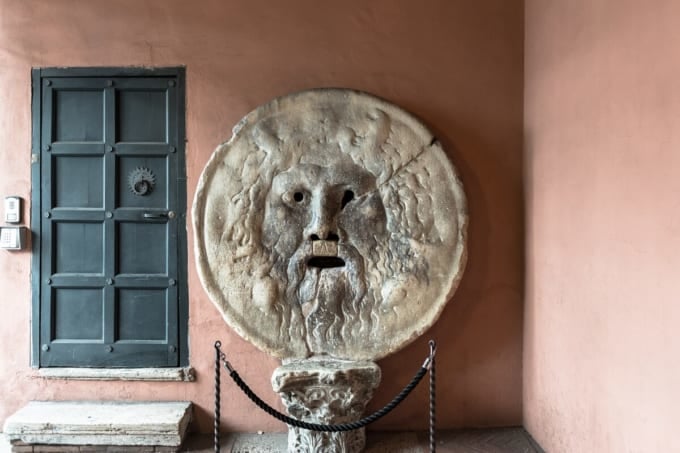
The Mouth of Truth became a world-famous attraction in Rome, Italy, thanks to Audrey Hepburn’s classic film Roman Holiday. In the movie, Gregory Peck’s character, a journalist named Joe, tries to scare Princess Ann by placing his hand in the Mouth of Truth, where legend says liars risk having their hand bitten off. The playful scene made this spot widely popular with tourists.
The unique design, resembling the face of the sea god Triton, was originally a manhole cover for the Roman sewer system. Today, it’s a popular photo spot where many tourists recreate the iconic scene from Roman Holiday. When visiting Italy, why not try your own Roman Holiday moment with the Mouth of Truth?
Name: Bocca della Verità / Mouth of Truth
Address: Piazza della Bocca della Verità, 18, 00186 Rome, Italy
11. Sforzesco Castle (Milan)
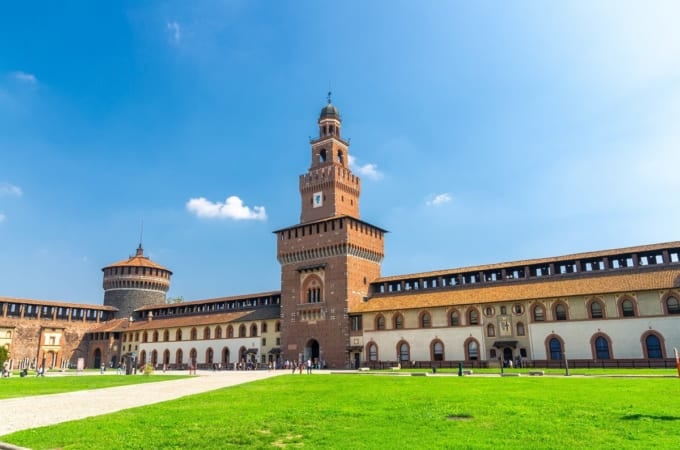
The Sforza Castle in Milan, Italy, was constructed in 1450 by Francesco Sforza, Duke of Milan, who rebuilt the Visconti family’s residence into a fortress. It’s said that the renowned Italian artist Leonardo da Vinci was also involved in its construction.
During the 16th and 17th centuries, the castle was renovated and expanded, eventually becoming one of the largest fortresses in Europe. Today, it’s a popular tourist attraction in Italy.
Beyond the charming entrance tower, visitors enter a large, spacious courtyard. Inside the castle is a museum that houses Michelangelo Buonarroti’s Rondanini Pietà, a sculpture he was working on up until his final days. With so many famous Italian figures associated with the Sforza Castle, it’s a must-see when touring Italy.
Name: Sforza Castle / Castello Sforzesco
Address: Piazza Castello, 20121 Milan, Italy
12. Santa Maria delle Grazie (Milan)
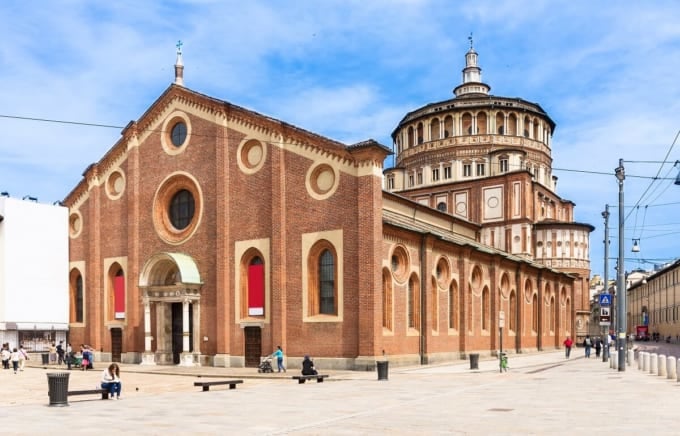
The Church of Santa Maria delle Grazie in Milan, Italy, is a Renaissance-style church built between 1465 and 1482. It is recognized as a UNESCO World Heritage Site and is a popular attraction for tourists visiting Italy.
In the refectory of Santa Maria delle Grazie, you’ll find The Last Supper, one of Leonardo da Vinci’s masterpieces. This monumental painting measures 420 x 910 cm, making it an impressive sight! Though many of Leonardo's works were left unfinished, The Last Supper is one of his few completed pieces and is highly valuable.
Due to its popularity, visiting requires an advance reservation and ticket, so be sure to plan accordingly. In 1980, both the Church of Santa Maria delle Grazie and *The Last Supper* were registered as World Heritage Sites.
Name: Church of Santa Maria delle Grazie
Address: Piazza di Santa Maria delle Grazie, 20123 Milan, Italy
13. Piazzale Michelangelo (Florence)

Piazzale Michelangelo in Florence, Italy, is located on a hill that offers a panoramic view of the city’s beautiful skyline.
Although it’s named after the famous Italian artist Michelangelo, the square was actually designed by Giuseppe Poggi. Interestingly, despite the name, there isn’t a strong connection to Michelangelo here, though a replica of his famous David statue stands in the center of the square.
While not directly related to Michelangelo, the square is renowned for its breathtaking views, making it a popular tourist destination. The best time to visit Piazzale Michelangelo is in the evening, as the sunset casts a mesmerizing glow over Florence, creating a scene so beautiful you’ll lose track of time.
Name: Piazzale Michelangelo / Michelangelo Square
Address: Piazzale Michelangelo, 50125 Florence, Italy
14. Uffizi Gallery (Florence)
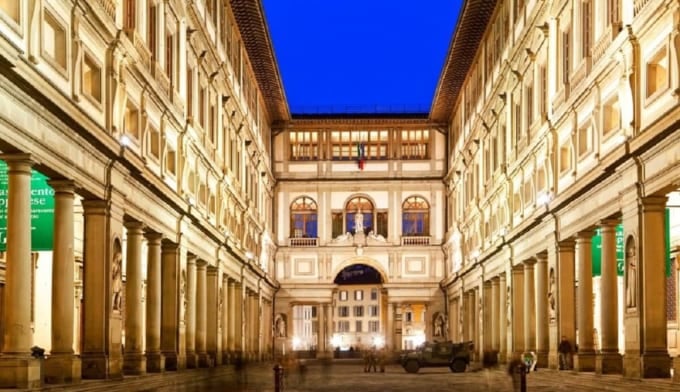
The Uffizi Gallery in Florence, Italy, is a popular destination for tourists. Its appeal lies in its extensive collection, with over 2,500 works collected over many years by the powerful Medici family, who once ruled Florence. To fully explore it, you’d need an entire day.
The gallery houses works by renowned Italian artists such as Leonardo da Vinci, Michelangelo, Botticelli, and Raphael, drawing many visitors and resulting in long lines. If you’d prefer to avoid waiting, visiting on a weekday or early in the morning is recommended for a less crowded experience. You can also reserve tickets online.
One of the gallery’s highlights is The Birth of Venus by Renaissance artist Sandro Botticelli. Be sure to stop by and experience it.
Name: Uffizi Gallery / Galleria degli Uffizi
Address: Piazzale degli Uffizi, 6, 50122 Florence, Italy
15. St. Mark's Basilica (Venice)
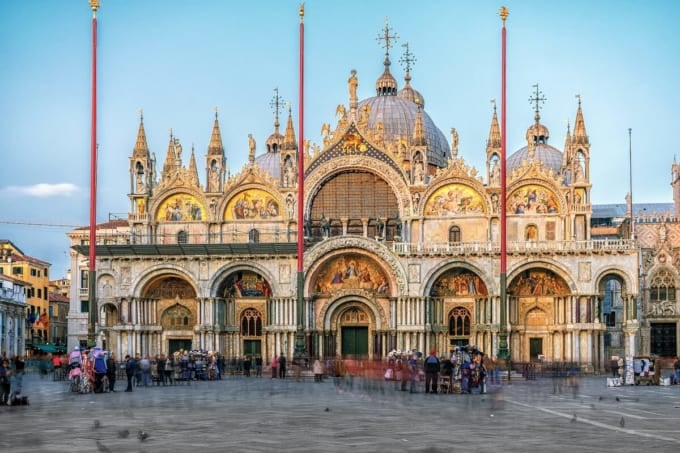
The Basilica of San Marco, built to house the relics of Saint Mark brought by two Venetian merchants, is one of the most famous sites in Venice, Italy. It features a design inspired by styles from over 500 years ago in Constantinople and is a prime example of Byzantine architecture influenced by the Eastern European Empire, with its uniquely rounded domes making a lasting impression.
As a popular Italian tourist destination, it often has long lines, so reserving tickets online is convenient. Visiting early in the morning also helps avoid crowds.
The basilica is incredibly lavish, adorned with marble, mosaics, and a variety of gemstones. Photography is prohibited, so be sure to take it all in while you’re there. Since San Marco is considered a sacred site, revealing clothing such as camisoles and miniskirts is not permitted.
Name: St. Mark's Basilica / Basilica di San Marco
Address: San Marco, 328, 30100 Venice, Italy
16. Bridge of Sighs (Venice)

The Bridge of Sighs is one of the historic bridges in Venice, Italy, dating back to the 16th century. This elegant bridge, crafted from white marble, connects the interrogation rooms of the Doge’s Palace with the prison.
According to Italian legend, if a couple kisses beneath the bridge in a gondola at sunset, their love will be eternal. As a romantic hotspot, gondola tours passing under the bridge are especially popular, making it a fun experience for couples.
The name Bridge of Sighs does not come from its beauty but rather from the sighs of prisoners who would catch their last glimpse of Venice’s beautiful scenery from the bridge before being led to their cells. It’s an interesting contrast to its status as a love-spot! Be sure to check it out when visiting Italy.
Name: Bridge of Sighs / Ponte dei Sospiri
Address: Piazza San Marco, 1, 30100 Venice, Italy
17. La Fenice Theatre (Venice)
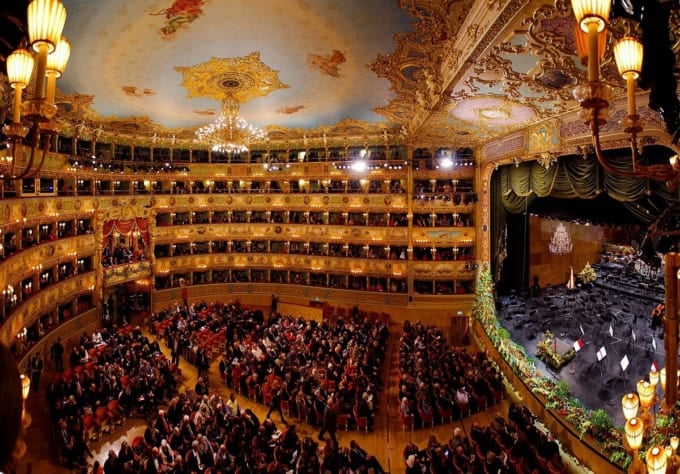
The Teatro La Fenice in Venice, Italy, is a popular and historic theater known for its stunning performances. The name "Fenice", meaning "phoenix" in Italian, was chosen as it was the successor to another Venetian opera house that burned down in 1773. Fittingly, the theater itself has burned down twice, in 1836 and 1996, but was rebuilt each time, embodying the spirit of its name.
At La Fenice, visitors can enjoy authentic opera in a lavish setting with chandeliers. The theater is also famous as the venue for the premiere of "La Traviata". It’s a cherished spot for both tourists and locals alike. When visiting, it’s important to note the dress code: many guests dress elegantly in bow ties, tuxedos, or dazzling gowns, so dressing up for the occasion is the way to go! This theater offers a graceful and memorable experience.
Name: La Fenice Theatre / Teatro La Fenice
Address: Campo San Fantin, 1965, 30124 Venice, Italy
Official/related website URL: https://www.teatrolafenice.it/
18. Tower of Pisa (Pisa)
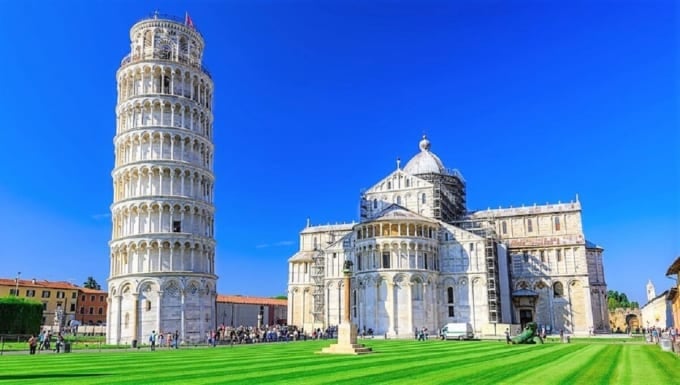
The Leaning Tower of Pisa, one of Italy’s most iconic landmarks, is located in Pisa in the Tuscany region of central Italy. Standing about 55 meters tall, this mysterious structure leans due to the unstable ground beneath it. Despite its tilt, it’s said to be safe for at least another 200 years, so no need to worry!
You can climb the tower, but reservations are recommended as there are limited slots. Climbing the leaning tower offers an exciting and slightly nerve-wracking experience.
Around the tower, tourists can be seen taking playful photos using perspective to make it look like they’re holding up the tower. Try pinching it, placing it on your palm, or experimenting with other fun poses. Don’t forget your camera when visiting the Leaning Tower of Pisa.
Name: Leaning Tower of Pisa / la torre di Pisa
Address: Piazza del Duomo, 56126 Pisa PI, Italy
19. Blue Grotto (Capri)
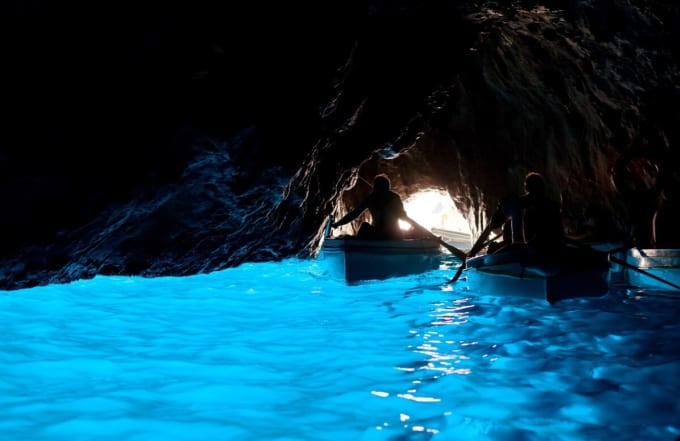
In southern Italy, the island of Capri is just an hour by boat from Naples. Known for its natural beauty, Capri is famous for the stunning Blue Grotto. Inside this cave, the vibrant blue water glows like neon lights, creating an otherworldly and surreal atmosphere. Many tourists come to Italy specifically to experience the magic of the Blue Grotto.
During the busy summer season, the Blue Grotto attracts numerous visitors, but the entrance is narrow, so access is restricted on days with high waves. The best chances to enter are from May to August, but if you’re planning to visit, it’s recommended to allow extra days in case of high waves.
Name: Blue Grotto / Grotta Azzurra
Address: Via Grotta Azzurra, 80071 Anacapri NA, Italy
20. Leonardo da Vinci National Museum of Science and Technology (Milan)
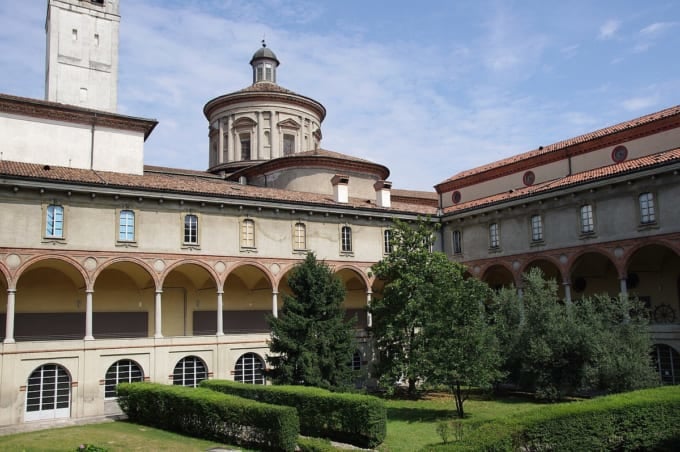
The Leonardo da Vinci National Museum of Science and Technology, named in honor of the Italian master Leonardo da Vinci, was created to commemorate the 500th anniversary of his birth. Housed in a former monastery built in the early 16th century, this museum has a charming historical ambiance.
The museum focuses on the development of scientific thought and the progress of industrial technology, with exhibits organized into three main categories: the Leonardo Gallery, the Railway Pavilion, and the Air and Sea Transport Pavilion. It also displays models of inventions by renowned Italian scientist Galileo Galilei, making it a popular spot among tourists. The exhibits are designed to be accessible to children, making it an ideal Italian destination for families.
Name: Leonardo da Vinci National Museum of Science and Technology / Museo Nazionale Scienza e Tecnologia Leonardo da Vinci
Address: Via San Vittore, 21, 20123 Milan, Italy
Official/related website URL: https://www.museoscienza.org/it
◎Summary of recommended tourist spots in Italy
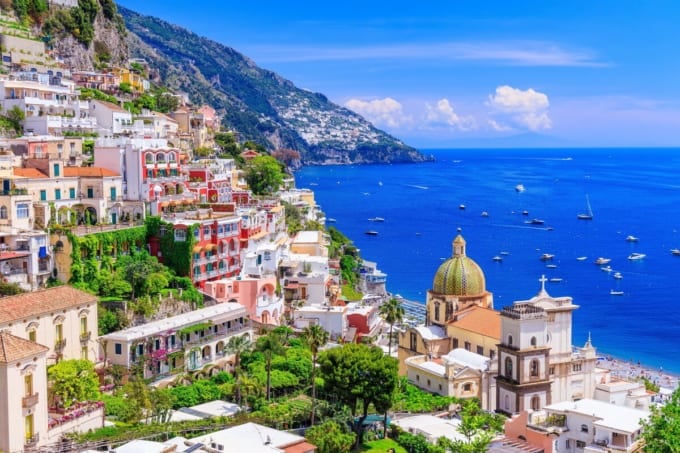
Introduced here are the20 must-visit tourist spots in Italy. With famous landmarks like the Colosseum and the Leaning Tower of Pisa, there’s so much to look forward to! Italy is full of charm, with its many historical buildings and elegant, beautiful cityscapes. Why not embark on a journey through Italy and experience it for yourself?
RELATED ARTICLES
REGIONS
CATEGORIES
FEATURED ON Italy
-
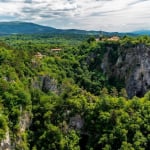
Introducing All 5 World Heritage Sites in Slovenia! Explore the Magnificent World Heritage of This Small Country
-
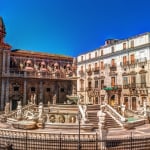
Representative Souvenirs from Palermo, the Largest City in Sicily
-
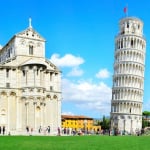
Everyone is Tilted! 4 Popular Souvenirs from Pisa, Italy — Home of the Leaning Tower of Pisa
-
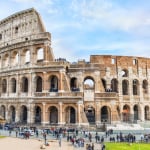
When It Comes to Rome Souvenirs, This Is It! We Introduce 4 Recommended Classics
-

A Fascinating Province in Italy! Exploring the Tourist Spots of Crotone!
MOST POPULAR ON Italy
-
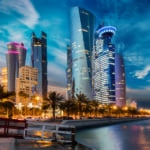 1
1Doha: Must-see Attractions in the Capital of Qatar
-
 2
2Toronto: 10 Things to do in this Picturesque Canadian City
-
 3
3Amarillo: A City Famous for It’s Amazing Canyons, Great History and Music
-
 4
4South Korea: Dazzling Scenery, Rich Culture and Fascinating History
-
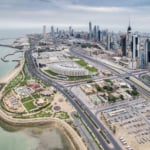 5
5Kuwait: A Country in Middle East Asia Famous for Hot Sand Dunes and Stunning Cityscape
